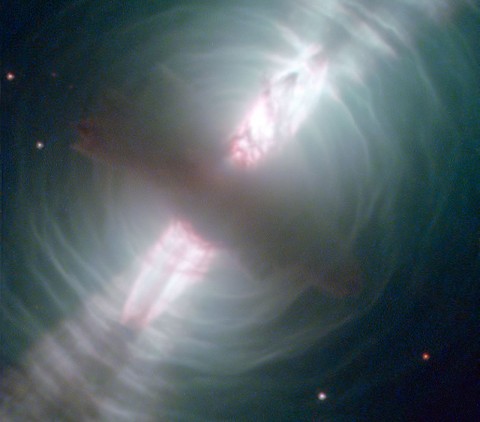
(editor's note: The Hubble Telescope has enabled us to gain better understandings of the life cycle of stars, planets and other cosmic bodies. Today's report includes an amazing photograph of the short "preplanetary nebula" phase of an aging star.
I'm so happy to report that news of activities happening outside and around our planet continue to intrigue more and more people!
Just a few years ago, "space geeks" were the only ones interested in all the wonderous events of our neighboring planets, stars, and galaxies. Now it seems everyone has their eyes to the skies!
The view from down here is a special vantage point, so I hope you enjoy this report and get a better understanding of how important YOU are to the beautiful Cosmos we all call home.
~All my Love, Boo)
NASA’s Hubble Space Telescope spots Searchlight Beams from Preplanetary Nebula
One stage that stars pass through as they run out of nuclear fuel is called the preplanetary or protoplanetary nebula stage. This Hubble image of the Egg Nebula shows one of the best views to date of this brief but dramatic phase in a star’s life.

The short lifespan of preplanetary nebulae means there are relatively few of them in existence at any one time. Moreover, they are very dim, requiring powerful telescopes to be seen. This combination of rarity and faintness means they were only discovered comparatively recently.
At the center of this image, and hidden in a thick cloud of dust, is the nebula’s central star. While we can’t see the star directly, four searchlight beams of light coming from it shine out through the nebula. It is thought that ring-shaped holes in the thick cocoon of dust, carved by jets coming from the star, let the beams of light emerge through the otherwise opaque cloud.
The precise mechanism by which stellar jets produce these holes is not known for certain, but one possible explanation is that a binary star system, rather than a single star, exists at the center of the nebula.
The onion-like layered structure of the more diffuse cloud surrounding the central cocoon is caused by periodic bursts of material being ejected from the dying star. The bursts typically occur every few hundred years.

